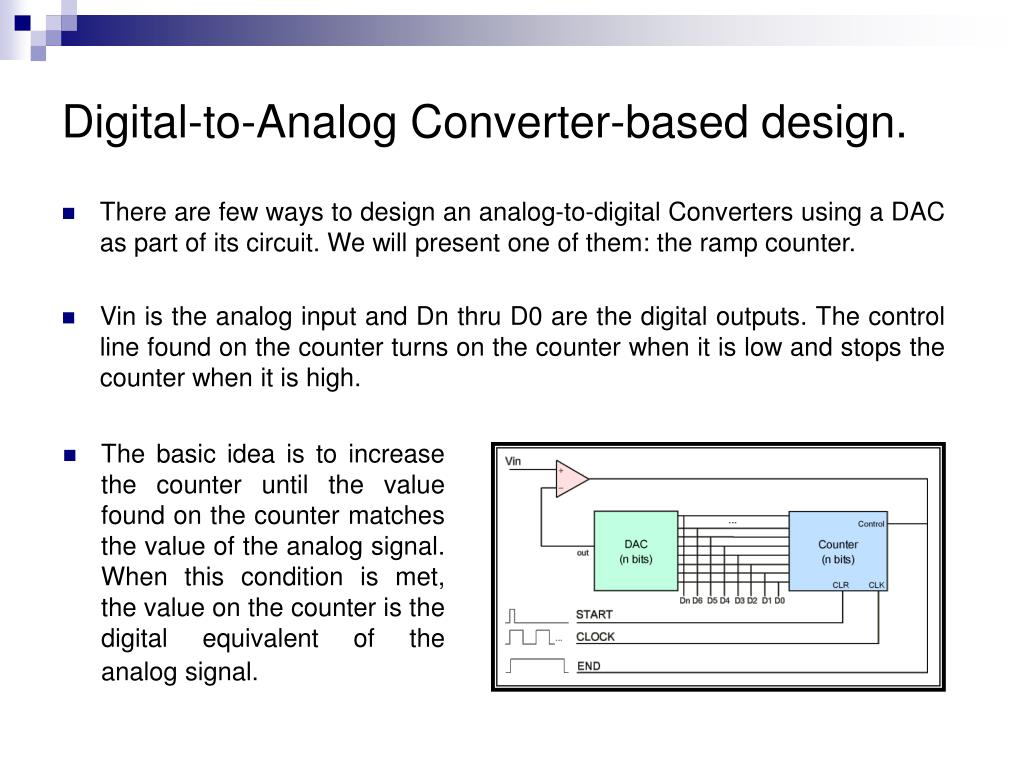Analog to Digital and Digital to Analog convertersimple and best mini Circuit Diagram
BlogAnalog to Digital and Digital to Analog convertersimple and best mini Circuit Diagram Analog pins in Arduino: Arduino has 6 analog channels for reading analog signals of 0 to 5 Volts. Each channel has a separate analog pin. ATmega328P microcontroller has an inbuilt Analog Digital converter with 10-bit resolution. Analog pins in Arduino only can read the analog input. It cannot reproduce the analog voltage. The DAC is a digital to analog converter, Vin is the analog input pin, S/H is the sample and hold, and COMP is the comparator. The conversion process is initiated by an analog signal entering the ADC at Vin. Upon receiving the signal, the control unit of the ADC will give a command to the successive approximation register, which starts

In electronics, an analog-to-digital converter (ADC, A/D, or A-to-D) is a system that converts an analog signal, such as a sound picked up by a microphone or Learn how to make a successive approximation (SAR) Analog to Digital Converter (ADC) that's relatively fast…well, as fast as you want to make it. Using some Digital Signal: A digital signal is a signal that represents data as a sequence of discrete values; at any given time it can only take on one of a finite number of values. Analog Signal: An analog signal is any continuous signal for which the time varying feature of the signal is a representation of some other time-varying quantity i.e., analogous to another time varying signal.

How To Make an ADC from Scratch! (Analog to Digital Converter) Circuit Diagram
For example a 4-bit ADC will have a resolution of one part in 15, (2 4 - 1) whereas an 8-bit ADC will have a resolution of one part in 255, (2 8 - 1). Thus an analogue to digital converter takes an unknown continuous analogue signal and converts it into an "n"- bit binary number of 2 n bits.. But first let us remind ourselves of the differences between an analogue (or analog) signal

[Daniel Garcia] sent us a quick tutorial he put together demonstrating how to use an ATmega168 to perform analog to digital conversions. This timely tutorial would make for a nice complimentary pro… I'm trying to hook up a sip-puff air pressure sensor which outputs 0v to 5v depending if the pressure is -ve (sipping) or +ve (puffing).I want to use it to drive a Bluetooth keyboard controller to help a disabled person use an iPad.When pins on the Bluetooth controller are driven low, they send a key press - the idea being when you sip it sends key 'a' and when you puff it sends 'b'. This is a simple type of ADC you can create at home with fairly common parts. I know I skipped over some details like some component values and specific conc
